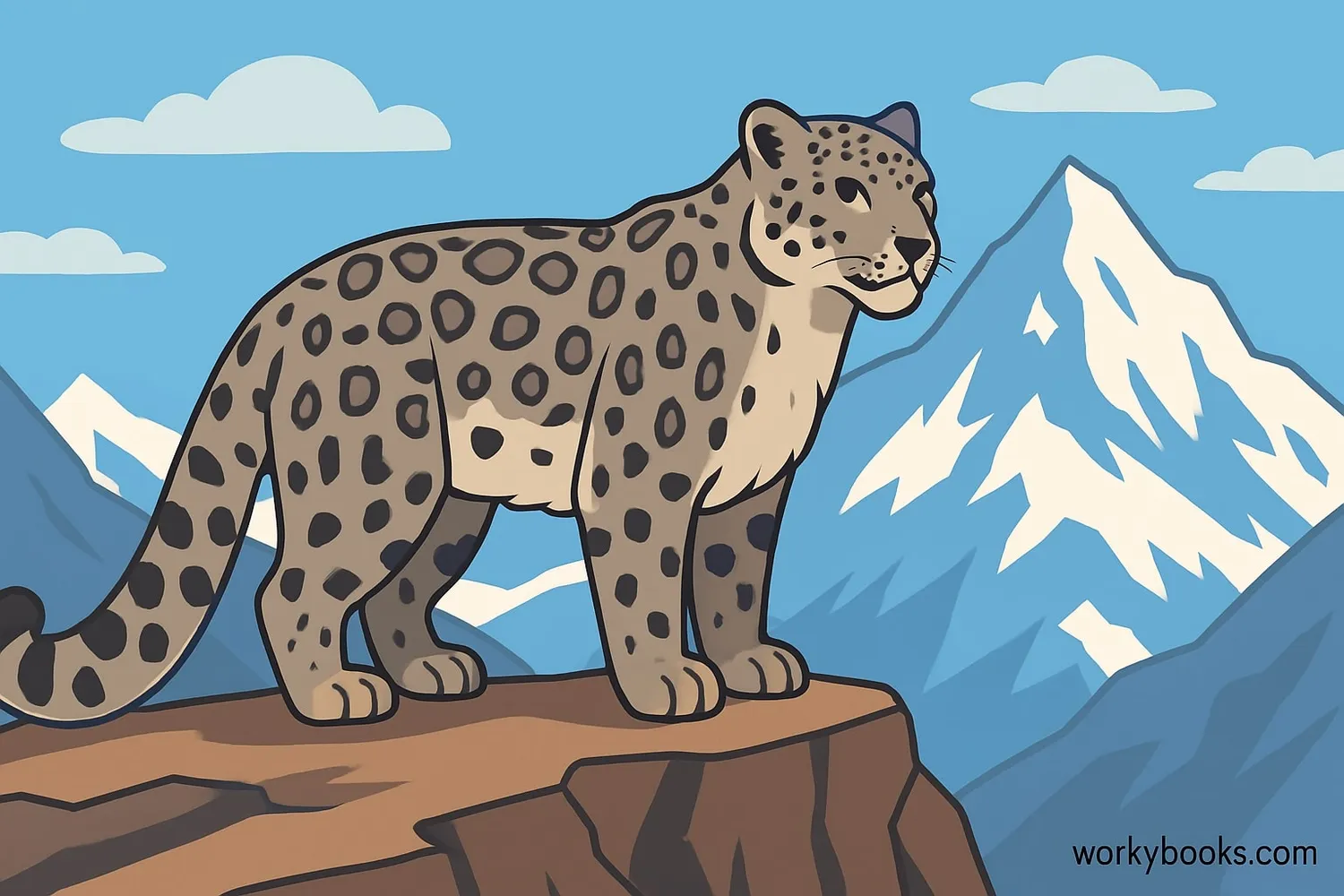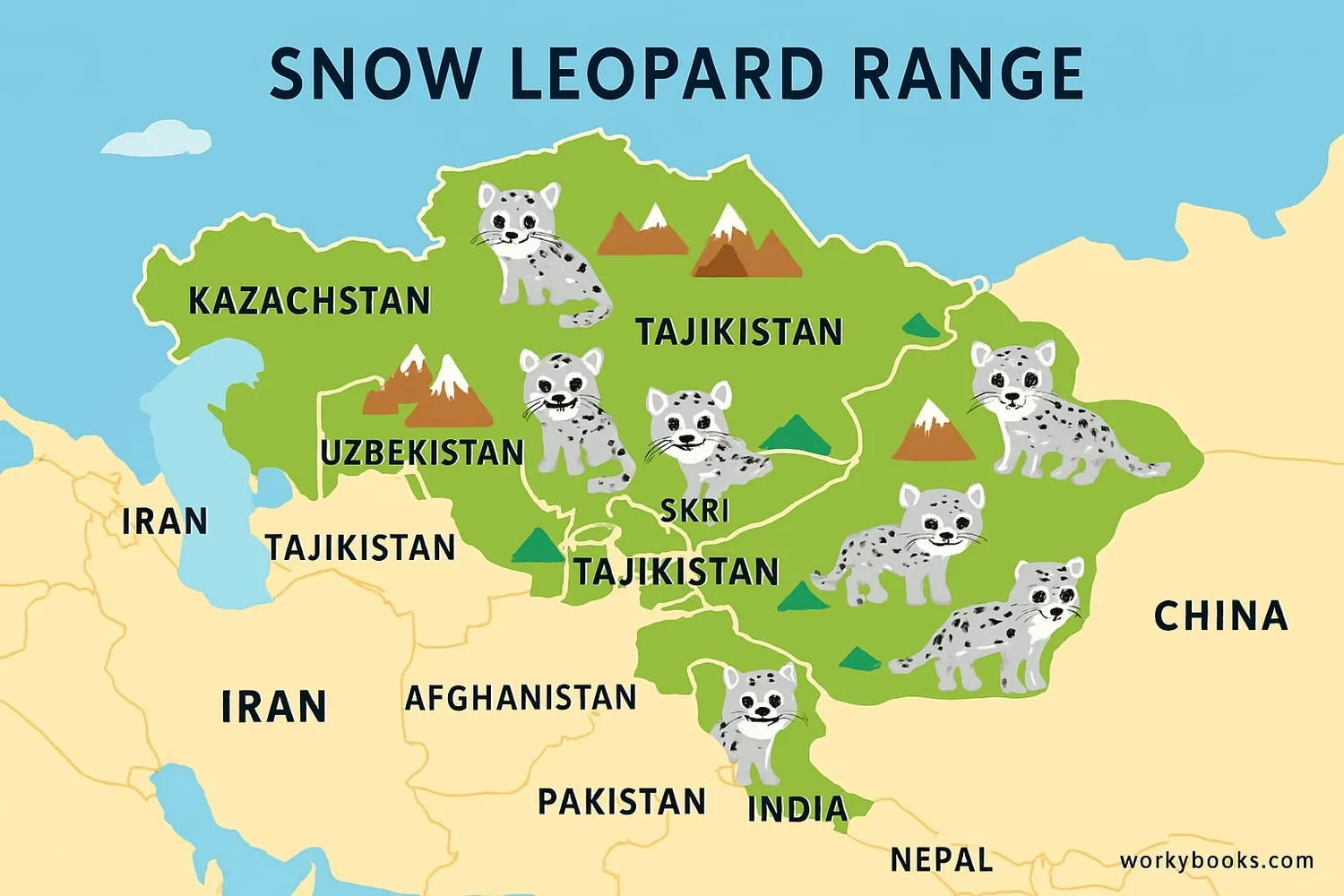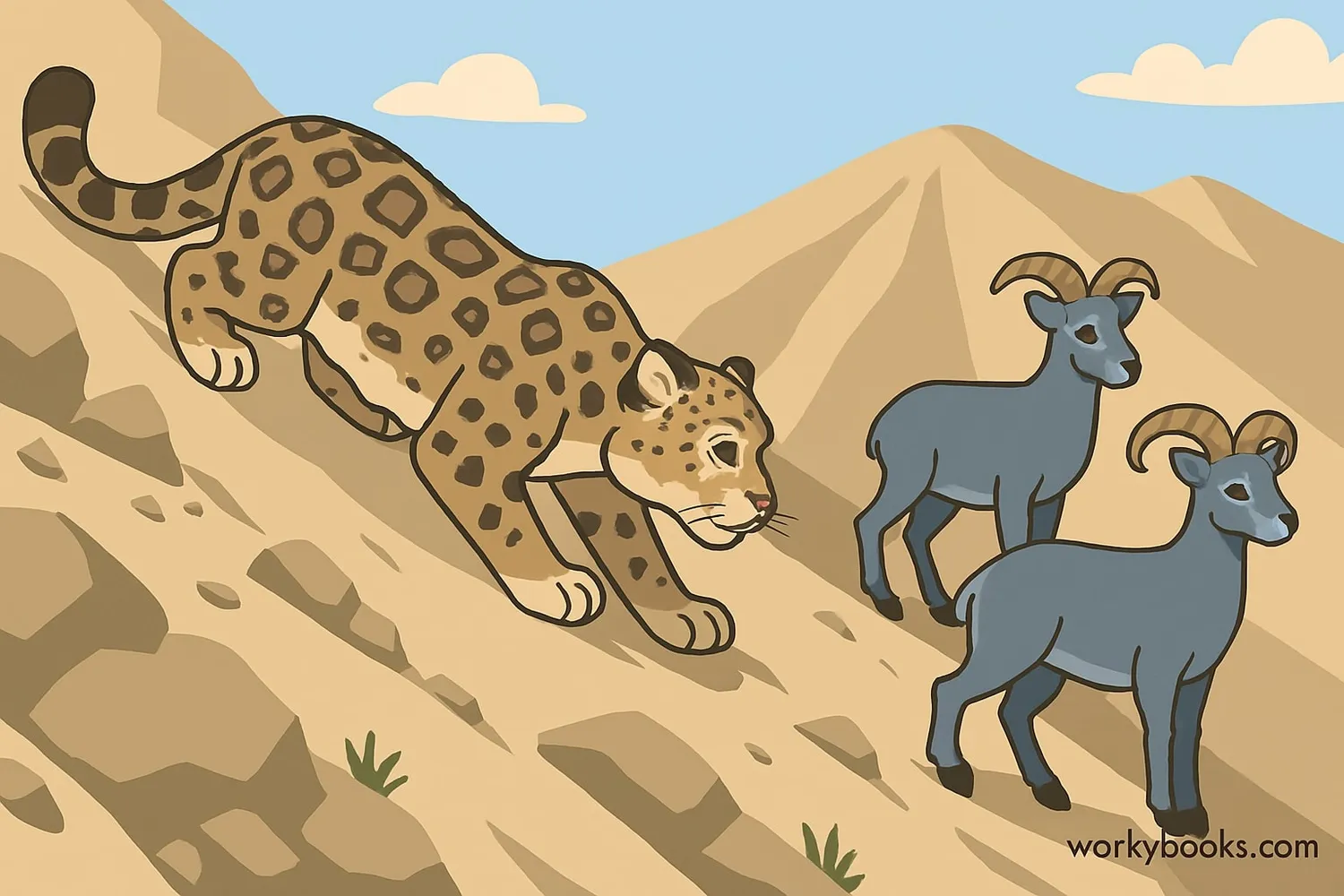Snow Leopard - Definition, Examples, Quiz, FAQ, Trivia
Discover the elusive snow leopard and its mountain habitat
What is a Snow Leopard?

Snow leopards (Panthera uncia) are magnificent big cats known as the "Ghost of the Mountains" because of their elusive nature. They live in the high mountains of Central Asia and have several special features:
Size & Appearance
4-5 feet long with a 3-foot tail, weighing 60-120 pounds
Unique Fur
Thick, smoky-gray coat with black rosettes and spots
Special Features
Powerful build, short muzzle, and domed forehead
Did You Know?
Snow leopards can't roar! They make sounds called "chuffing" and use their long tails for balance and warmth.
Snow Leopard Habitat

Snow leopards live in some of the most extreme environments on Earth:
Geographic Range
12 countries across Central and South Asia
Mountain Homes
Himalayas, Hindu Kush, Pamirs, Tian Shan, Altai
Altitude
3,000 to over 5,500 meters (9,800-18,000 feet)
Their habitat includes alpine meadows, treeless rocky mountains, and steep cliffs. Snow leopards need large territories because prey is scarce in these harsh environments.
Habitat Challenge
Snow leopards live in areas with less oxygen than at sea level, but their bodies have adapted to these conditions!
Amazing Adaptations

Snow leopards have developed incredible adaptations to survive in their harsh mountain environment:
Insulating Fur
Thick coat with dense underfur keeps them warm in -40°C temperatures
Snowshoe Paws
Large, fur-covered paws act as natural snowshoes
Long Tail
3-foot tail for balance on cliffs and warmth when sleeping
Powerful Legs
Can leap 6 times their body length (up to 50 feet)
Oxygen Efficiency
Larger nasal cavities warm cold air and help with thin oxygen
Camouflage Experts
Their spotted coat provides perfect camouflage in rocky terrain, making them nearly invisible!
Behavior & Diet

Snow leopards are solitary and elusive predators with fascinating behaviors:
Diet
Blue sheep, ibex, argali, marmots, and smaller prey
Territory
Adults need large territories (up to 400 sq km)
Family Life
Mothers raise 1-4 cubs for up to 2 years
Snow leopards are most active at dawn and dusk (crepuscular). They communicate through scent markings, scrapes, and vocalizations like chuffs and moans rather than roaring.
Lifespan
In the wild, snow leopards live 15-18 years, while in captivity they may live up to 25 years.
Conservation

Snow leopards face serious threats to their survival:
Habitat Loss
Human development and climate change impact mountain ecosystems
Poaching
Illegal hunting for fur and body parts
Prey Reduction
Decline in wild sheep and goats due to competition with livestock
Retaliation Killing
Herders killing leopards that prey on livestock
Conservation efforts include:
• Protected areas across 12 countries
• Community-based conservation programs
• Anti-poaching patrols
• Research using camera traps and satellite collars
• Sustainable livestock management
Population Status
Only 4,000-6,500 snow leopards remain in the wild. They are listed as Vulnerable by the IUCN.
Snow Leopard Quiz
Test your snow leopard knowledge with this quiz!
Frequently Asked Questions
Here are answers to common questions about snow leopards:
Snow Leopard Trivia
Discover some amazing facts about snow leopards!
High Altitude Champions
Snow leopards live higher than any other big cat, with some found at elevations of 18,000 feet - higher than most humans can survive without supplemental oxygen!
Tail Power
A snow leopard's tail can be up to 3 feet long - nearly as long as its body! They use it for balance on narrow cliffs and wrap it around themselves like a scarf for warmth when sleeping.
Incredible Jumpers
Snow leopards can leap up to 50 feet horizontally - that's as long as a school bus! Their powerful hind legs help them navigate rocky terrain and ambush prey.
Built for the Cold
Snow leopards have the densest fur of any cat - up to 5 inches thick on their belly and tail. Their wide, fur-covered feet act as natural snowshoes in deep snow.


